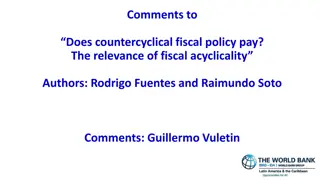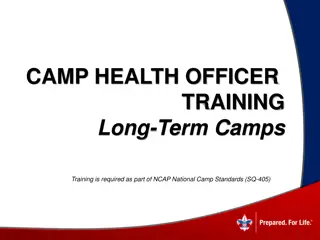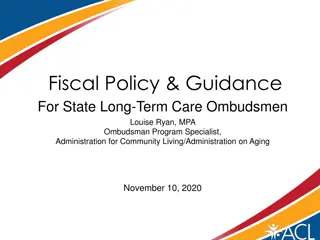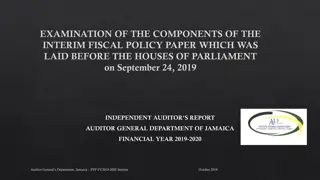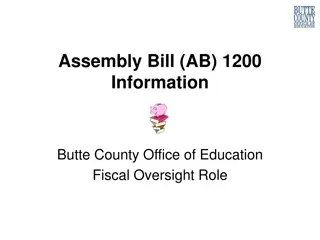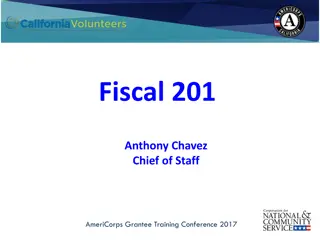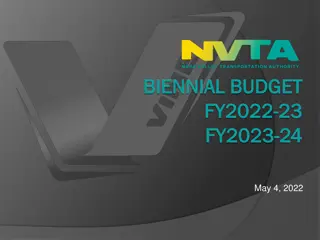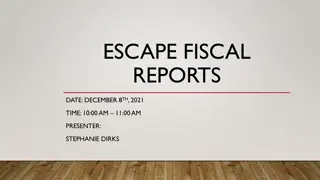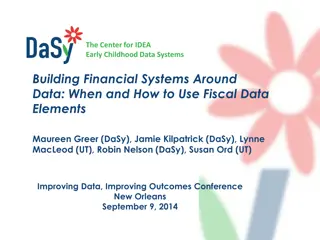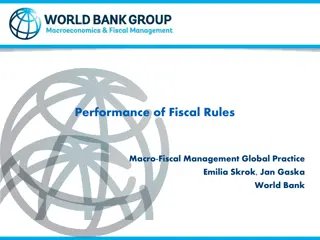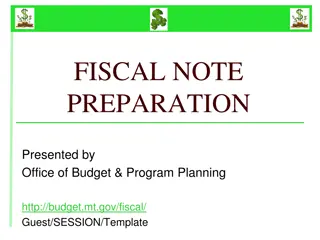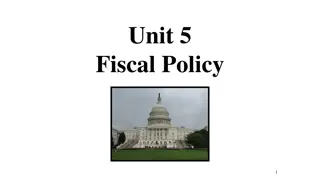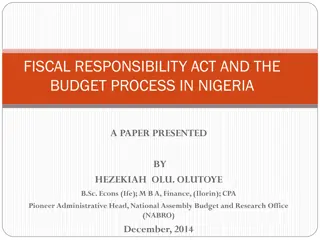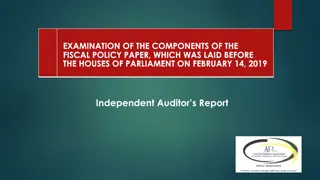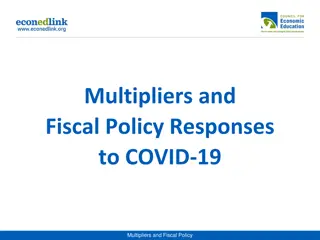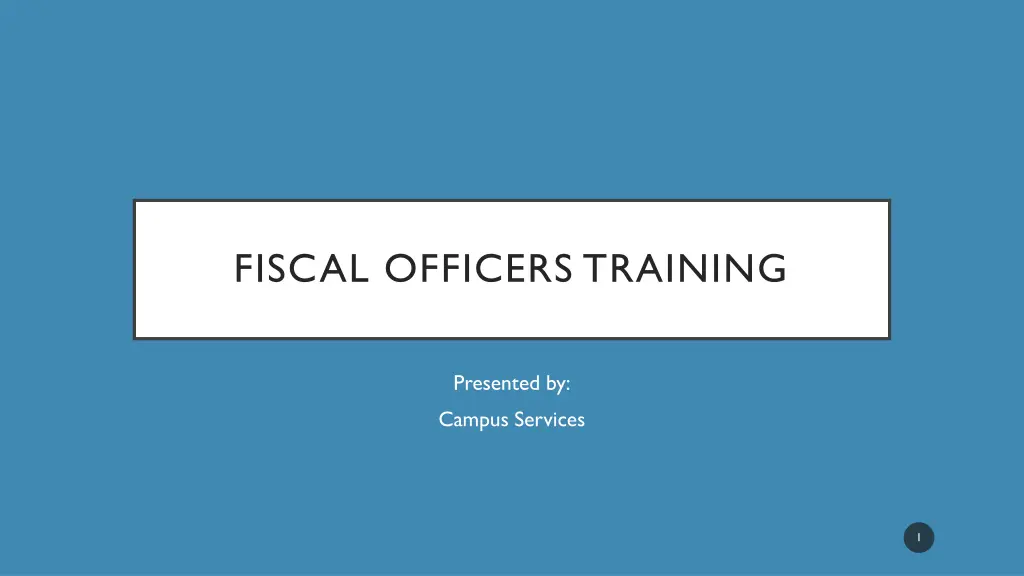
Fiscal Officers Training Overview and Responsibilities
"Explore the training provided by Campus Services for fiscal officers, covering responsibilities, KFS workflow, balances, policies, procedures, internal controls, fiscal responsibility, stewardship obligations, and more. Gain insights into the role of fiscal officers and their key responsibilities in financial transactions and approvals." (355 characters)
Download Presentation

Please find below an Image/Link to download the presentation.
The content on the website is provided AS IS for your information and personal use only. It may not be sold, licensed, or shared on other websites without obtaining consent from the author. If you encounter any issues during the download, it is possible that the publisher has removed the file from their server.
You are allowed to download the files provided on this website for personal or commercial use, subject to the condition that they are used lawfully. All files are the property of their respective owners.
The content on the website is provided AS IS for your information and personal use only. It may not be sold, licensed, or shared on other websites without obtaining consent from the author.
E N D
Presentation Transcript
FISCAL OFFICERS TRAINING Presented by: Campus Services 1
OVERVIEW Responsibilities KFS Workflow Balances Policy and Procedures Internal Controls 2
FISCAL RESPONSIBILITY Fiscal responsibility stems from laws, regulations and policies, and is the responsibility of every employee . The fundamentals of fiscal responsibility call for each employee to make a personal commitment to do the right thing and to make decisions that are just and right for the University s common good. 4
STEWARDSHIP RESPONSIBILITIES CSU has a stewardship obligation to: Properly and accurately process all receipts and disbursement of funds Account for all financial resources received and used Ensure that all financial transactions conform to legal requirements and administrative policies, and are recorded in accordance with generally accepted accounting principles for colleges and universities Provide financial reports that present to all university clients, constituents, and the public a complete picture of the university s funds and their uses Timely processing and approving of all financial transactions 5
FISCAL OFFICER (FO) A role assigned in Kuali at the account level Individual, not group Can be delegated Journal Entries entered in Kuali that relate to the account, route to FO for approval FO must be knowledgeable on the transactions that should hit the account Funds are spent according to a pre-established budget or need an allocation of expenses are appropriate 6
FISCAL OFFICERS RESPONSIBILITIES Review every Kuali document that routes and if appropriate, approve A few documents are uploads and do not route (e.g. payroll) During review must ensure: Adequate resources exist (i.e. budget or cash) Entry is correct and is supported by adequate back-up Accurate Correct object code/Account Number Does not violate fiscal rules, Federal or State Laws or Uniform Guidance 7
FISCAL OFFICERS RESPONSIBILITIES Able to answer all questions relating to the account and transactions Ensure adequate coverage is in place during absence (e.g. fiscal officer delegate in place) 8
FISCAL OFFICER RESPONSIBILITIES Account Reconciliation Recommend monthly reconciliation, but at a minimum quarterly reconciliation of the account to ensure: Appropriate charges - charges are appropriate and charged to correct account Not overspent - account is not in cash deficit or exceeds budget Expense being recorded in period incurred and revenue being recorded in period earned No set reconciliation template 9
KUALI WORKFLOW-FISCAL OFFICER Approves all Adjustment/Accrual Vouchers, Budget Adjustments, Distribution of Income and Expense, General Error Correction, Encumbrance and Transfer of Funds $1,000 or greater approves: Disbursement Voucher, Internal Billing, Internal Order, Requisition Does not approve: automatic uploads such as payroll and student/commercial receivables Fiscal Officer Route Log Example: 15
ACCOUNT SUPERVISOR Normally dean, department head, business manager, or other senior administrator No approval role in Kuali Provides leadership role by providing oversight for account management Cannot be the Fiscal Officer or Account Manager 16
ORGANIZATIONAL APPROVER ORG-XXXX Multiple people in group, but only needs 1 to approve Access is granted via a form, and not through edit in Kuali Approver is normally a business manager, department manager, or other senior administrator 17
ORGANIZATION APPROVAL ORG-xxxx Approves all Adjustment/Accrual Vouchers, Budget Adjustments, Distribution of Income and Expense, General Error Correction, Encumbrance and Transfer of Funds $1,000 or greater: Disbursement Voucher, Internal Billing, Internal Order, Requisition Organization Approval Route Log Example: 18
DIVISION APPROVER DIV-xx Multiple people in group, but only needs one to approve Access is granted via a form, and not through edit in Kuali Typically dean, department head, or other senior administrator For small department, individual can be in ORG and DIV roles, but should not be the fiscal officer 19
DIVISION APPROVER Approves all transactions over $10,000 If you click on DIV-B2, it will show all the individuals listed under that Division Division Approval Route Log Example: 20
OBJECT CODES Four digit code which specifies the type of activity being charged (assets, liabilities, revenue, expense) 22
OBJECT CODE SMART CODING Object Code Type Normal Balance Objects commonly used 1XXX Asset Debit Cash (1100) 2XXX Liability Credit A/P Liability (2100) 3xxx Beginning Balance Credit 3000 Beginning Balance Upload 4XXX 9900 9904 Revenue Credit External Revenue (43xx-44xx) Internal Revenue (48xx-49xx) Transfer Income (9900, 9904-Plant) 5XXX 6XXX 7xxx-8xxx 9902, 9905 Expense Debit Salary (5xxx), General Supplies (62xx), General Services (66xx) COGS, Equipment (7xxx-8xxx), Transfer Expense (9902, 9905-Plant) 23
BUDGET VS SELF FUNDED (CASH) Budget Based: calculate based off of budget (e.g. Education and General funds) Budget Actual - Encumbrances Self-Funded (Cash) Based: calculated based off of fund balance (e.g. Athletics, Auxiliaries) Assets (1xxx) Liabilities (2xxx) Capital accounts vary between budget and self-funded 24
BUDGET OR SELF-FUNDED (CASH)? Click on account number: 25
BUDGET OR SELF-FUNDED (CASH)? Click on SubFund Group Code: 26
BUDGET OR SELF-FUNDED (CASH)? Spending Authority will say Cash or Budget: 27
BALANCE INQUIRY Budget Based: Use Balances by Consolidation Self-Funded (Cash) Based: Use Available Balances 28
AVAILABLE BALANCES Fund Balance = $40 32
POLICY AND PROCEDURES The CSU System is governed by the CSU System Rules, which then delegates to the campuses, more authority to add more detail/information to the rules Financial Related Procedures are located: http://busfin.colostate.edu/Resources/Fin_Rules_Procs.aspx CSU Financial Rules: overview of the Financial Rules that govern CSU-Fort Collins Financial Procedure Instructions (FPI): goes into further detail regarding the Financial Rules 34
FINANCIAL PROCEDURE INSTRUCTIONS (FPI) Accounting: 36
FINANCIAL PROCEDURE INSTRUCTIONS (FPI) Expenditures and Revenues: 37
FINANCIAL PROCEDURE INSTRUCTIONS (FPI) Contracts: 38
FINANCIAL PROCEDURE INSTRUCTIONS (FPI) Capital Construction and Property, Plant and Equipment: 39
FINANCIAL PROCEDURE INSTRUCTIONS (FPI) Travel: 40
FINANCIAL PROCEDURE INSTRUCTIONS (FPI) Cash and Credit: 41
FINANCIAL PROCEDURE INSTRUCTIONS (FPI) Record Retention: 42
INTERNAL CONTROLS The mechanisms, rules and procedures implemented by Colorado State University to ensure the integrity of financial and accounting information, promote accountability and prevent fraud. Two types of Internal Controls: Preventative Controls Policies and procedures Detective Controls account reconciliations 44
INTERNAL CONTROLS An essential function of every finance-related job on the campus is to safeguard the assets of the university through the development and implementation of a solid structure of internal control. consists of policies and procedures designed to provide reasonable assurance that specific departmental and university objectives will be achieved. 45
LACK OF INTERNAL CONTROLS Without a set of internal controls, the university may fail to attain its objectives for reasons such as: Fraud and waste Losses resulting from fines and penalties due to non-compliance Inadequate resources resulting from inefficient processes Ineffective communication that, in turn, results in misapplication of effort and resources. 46
CREATING INTERNAL CONTROLS Each department must create and maintain a structure of internal controls. Internal controls may vary from one department to the next because the specific control structure implemented for a given entity within the university will depend upon its size, the nature and complexity of its operations, and whether or not it is subject to requirements imposed by legislative or regulatory bodies. Compensating Controls is a mechanism that is put in place to satisfy the requirement for a security measure that is deemed too difficult or impractical to implement at the present time. These are done after the transaction is complete. Monthly PCard reports are approved by Approving Official Outside factors such as regulatory agencies, personnel size, etc. can drive how internal controls are established. 47
INTERNAL CONTROL EXAMPLE Cash Handling Cashiers, who process check and cash payments, do not have access to Cash Receipt documents Ticket Sales: some departments sell tickets, and depending on size could have software that sells tickets, or do it by hand depending on set up, controls could vary Credit Card Sales: Depending on size of department, separation of duties around payment processing, entering journal entry and reconciliation Cash/Check: Person creating the deposit cannot also approve the deposit 48
INTERNAL CONTROL EXAMPLE Grant Accounts (53xxxxx) Not only have to follow Federal, State and University rules, but also Uniform Guidance 49
MAINTAINING INTERNAL CONTROLS Those completing the work must monitor the controls and offer suggestions for changes if warranted. Internal controls exist in a dynamic environment. Employees retire, computer systems are upgraded, and circumstances arise which may necessitate modifications to internal controls. Through continual monitoring of its internal control structure, the university can react quickly and effectively to changing conditions. Important to have written procedures (i.e. manuals, desk procedures) 50

